Ship Passengers arriving in San Francisco: 1800s
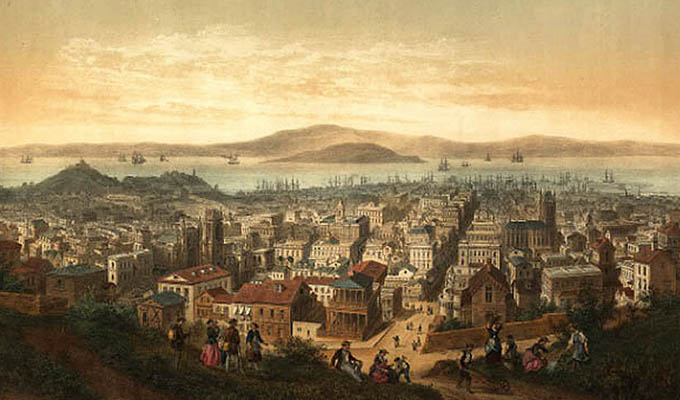
Raphael Weill
1837-1920
Raphael Weill, a French Jew, came to San Francisco in 1855.
(Editor's Note: The Daily Alta California and the Sacramento Daily Union of January 25, 1854 list R. Weill as a passenger on the SS Golden Gate, arriving San Francisco January 23, 1854; we do not know if this is Raphael Weill.)
Within three years he became a partner in the J. W. Davidson Dry Goods Store, one of the biggest dry goods dealers in California. By 1885, the store was all his.
Weill was one of the legendary figures of San Francisco. His store regularly closed at 6 o?clock (one of the first to adopt such a policy), he offered his employees annual vacation and sick time with pay, and they earned sales commissions.
He was a member of the San Francisco Board of Education, and supported San Francisco's French Hospital, where a wing in the building bears his name. He also contributed to the French community in San Francisco, as well as those living abroad, and he received the French Legion d'Honneur.
The Raphael Weill Public School (Elementary) at Geary and Buchanan Streets was named in his honor, and a Rodin statue at the San Francisco Palace of the Legion of Honor was also dedicated to him.
December 7, 1870, Daily Alta California
Messrs. J. W. Davidson's & Co's magnificent dry goods establishment ? The White House ? corner of Kearny and Post streets, was thrown open for the inspection of the public last evening. The building was brilliantly illuminated and densely crowded with ladies and geutlemen from the moment the doors were opened until they were closed. The streets in front were also thronged with spectators. The display of goods was most gorgeous, and many a lady went away crazy to possess some of the nice things seen.
Messrs. J. W. Davidson & Co. have added a convenience to their dry goods palace ? the White House? in the shape of footstool spittoons. By simply placing the foot on the pedal of one of these useful pieces of furniture the top of the footstool is thrown up revealing the spittoon. When the foot is removed the lid returns to its place. It is a good thing, and prevents ladles soiling their dream on the "nasty things."
The White House was known for its impeccable customer service and exquisite goods imported from France. Two of the most luxurious stores of the time, the City of Paris and the White House, had their roots in the splendid French style that was reflected in their Beaux Arts architecture and business approach. The White House boasted a lavish Parisian style tearoom that was a social center, and the art galleries and lectures at the store were renowned.
The building was designed by Albert Pissis. He was one of the first Americans to study at the legendary ?cole des Beaux-Arts in Paris and was a key figure in introducing that style to San Francisco.
June 29, 1875, Daily Alta California, San Francisco, California
The French Sufferers
A number of leading French citizens held a meeting yesterday afternoon at the office of M. Breull, the French Consul, to devise some means of relieving those of their couutryinen who have suffered by the overflowing of the Garronne and the submergence of the town of Toulouse. The calling of a general meeting of French residents was finally determined on, and the armory of the Lafayette Guard, No. 730 Montgomery street, chosen for the conference. The call is signed by Edmond Breull, Cousul-General of France, Gustavo Touchard, H Barroilhet, Gustave Mahe, David Cahnu, S. Moreau, E. Dubedat, Raphael Weill, A. Gensoul, Emile Marque, George Francfort, J. Belcour, Chancelier of the French Consul, G. Dussol, Alex. Weill, A. Dolet.
December 20, 1875, Daily Alta California
Accident to Raphael Weill
On Saturday evening Mr. Raphael Welll, of the White House, met with a very severe accident and had a narrow escape from death. He was riding on the front platform of one of the Sutter street cars and when between Hyde and Leavenworth streets jumped off while the car was in motion. Unfortunately Mr. Welll fell, and one of his feet was caught on the rope attached to the car for the "hill horse." Before he could be extricated from the position in which he fell one of the wheels of the car passed over one of his feet. He was removed as quickly as possible, surgical aid summoned and it was found necessary to amputate one or more of his toes.
June 27, 1880, Daily Alta California, San Francisco, California
THE FRENCH CELEBRATION.
Movements of the Executive Committee
A Letter from the French ConsulThe Executive Committee, appointed at the recent meeting of French citizens to arrange for the national celebration on the approaohlog 14th of July, met last evening, in the Frenoh Library. Raphael Weill is the Chair. The committee discussed the various details of the celebration, and in order to insure perfect success, divided themselves into seven sub-committees, each number assuming charge of a particular branch or department of the celebration. The committee was well pleased at the enthusiasm among the French residents, caused by the projected celebration, and it was assured that ample funds would be forthcoming to make the affair not only purely French in its character, but of so imposing a nature as to cause a sensation in the oommnmity. Several handsome individual subscriptions have already been made, and there is a prevailing sentiment among the French residents of this city each to contribute his quota. The following letter, received by Roger Blum, Secretary of the Executive Committee, from Mr. Antoine Forest, Consul of France at this port, was read
Dear Sir: I have had the honor of receiving your letter, informing me that at the meeting of French citizens, I have been favored with the Honorary Presidency of our National Celebration, on the 14th of July. I greatly appreciate the honor tendered me by my fellow countrymen, and I shall be proud to join with them in their manifestation of their patriotism in celebrating the glorious anniversary of the capture of the Bastile. Accept, with my thanks for the communication, the assurance of my sincere devotion.
Following the 1906 earthquake, he ordered 5,000 dresses and suits to be quietly distributed to the displaced women of the city. When 1,500 employees were drafted to fight in World War I, Weill had half their salary put into their bank accounts for a year. He was a founding member of the Bohemian Club, too, and regularly cooked lavish Sunday morning breakfasts at the club.
The popular dish, Chicken Raphael Weill, is named after him.
Chicken Raphael WeillFrom the Palm Beach Post-Times, Thursday, July 29, 1976 By Craig Claiborne, New York Times Many weeks after we printed a recipe for chicken Raphael Weill, the dish was reputedly created by a chef of the late wealthy Californian! We received a letter from Prof. Maynard A. Amerine, one of America's leading oenologists, who taught at the University of California at Davis before his retirement. The recipe we printed called for rosemary, thyme and garlic, but Amerine wrote: "So far as I know, Raphael Weill did not publish his recipe. However, in homes and clubs around town, the recipe never includes rosemary, thymr or garlic. Usually it includes tarragon, though in the late Louis Benoist's recipe he says it is optional. Oh, yes, parsley and chives are always used. Benoist's recipe, which Amerine enclosed, is from Favorite Recipes of California Winemakers, collected and published by the Wine Advisory Board in San Francisco. Benoist was a friend and for many years, owner of Almaden Vineyards. Here is the recipe: Ingredients
Directions
Yield: 4 to 6 servings |
Life in a California Mission: Monterey in 1786
Jean Francois de la Perousse. Linda Yamane, Illustrator. Introduction: Malcolm Margolin.
On the afternoon of September 14, 1786, two French ships appeared off the coast of Monterey, the first foreign vessels to visit Spain's California colonies. Aboard was a party of eminent scientists, navigators, cartographers, illustrators, and physicians.
For the next ten days the commander of this expedition, Jean Francois de La Perouse, the commander of this expedition, took detailed notes on the life and character of the area: its abundant wildlife, the labors of soldiers and monks, and the customs of Indians recently drawn into the mission. de La Perouse also recorded his time in New Caledonia.
Rush to Gold: The French and the California Gold Rush, 1848-1854
(Lamar Series in Western History)
Malcolm J. Rohrbough
The California Gold Rush began in 1848 and incited many “wagons west.” However, only half of the 300,000 gold seekers traveled by land. The other half traveled by sea. And it’s the story of this second group that interests Malcolm Rohrbough in his authoritative new book, The Rush to Gold. He examines the California Gold Rush through the eyes of 30,000 French participants. In so doing, he offers a completely original analysis of an important—but previously neglected—chapter in the history of the Gold Rush, which occurred at a time of sweeping changes in France.
Rohrbough is the author of Days of Gold, which is generally accepted as the essential text on the subject. This new book comes out of his extended research in French archives. He is the first to provide an international focus to these pivotal events in mid-nineteenth-century America. The Rush to Gold is an important contribution to the fast-growing field of transnational American history.
A Voyage to California, the Sandwich Islands, and Around the World in the Years 1826-1829
Auguste Duhaut-Cilly,
August Fruge (Editor, Translator), Neal Harlow (Editor, Translator).
While French sea captain Auguste Duhaut-Cilly may not have become wealthy from his around-the-world travels between 1826 and 1829, his trip has enriched historians interested in early nineteenth-century California. Because of a poor choice in goods to trade he found it necessary to spend nearly two years on the Alta and Baja California coasts before disposing of his cargo and returning to France. What was bad luck for Duhaut-Cilly was good luck for us, however, because he recorded his impressions of the region's natural history and human populations in a diary. This translation of Duhaut-Cilly's writing offers today's readers a rare eyewitness account of the pastoral society that was Mexican California, including the missions at the height of their power.
A veteran of the Napoleonic wars, Duhaut-Cilly was an educated man conversant in Spanish and English. He was also Catholic, which gave him special access to the California missions. Thus his diary allows the reader an insider's view of the padres' lives, including their dealings with the military. Through his eyes we see the region's indigenous people and how they were treated, and we're privy to his commentary on the behavior of the Californios.
This translation also contains Duhaut-Cilly's account of the Sandwich Islands portion of his voyage and provides an authentic rendering of life at sea during the early nineteenth century. In the spirit of Richard Henry Dana's Two Years before the Mast, Duhaut-Cilly's reflections are a historical gem for anyone with a love of personal narratives and original accounts of the past.




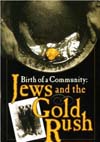
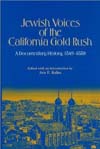

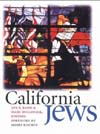

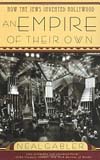
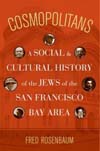

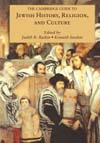

 Copyright ~ 1998-2018.
Copyright ~ 1998-2018. 